 |
| Category: Army
History/WW2 |

|
|
|
|
|
|
AUSTRALIAN WOMEN'S LAND
ARMY (AWLA), 1942-1945
|
|
Australian Women's Land
Army was formed in Australia, lasting from July 27, 1942 until 1945.
|
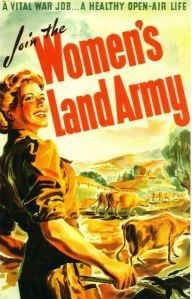 |
During World War Two many
people who normally worked on farms to produce food and other essential
items joined the armed forces to fight the war.
The government had to
find people to replace farm workers to be sure that people in Australia
as well as those fighting overseas had adequate supplies.
The nationwide Women’s
Land Army (WLA) was formed in July 1942.
Within two years there
were about 3000 women working on farms in the country. Most
WLA members worked full time. Their work was especially important in
growing fruit and vegetables, the cotton industry, and on dairy and
poultry farms.
|
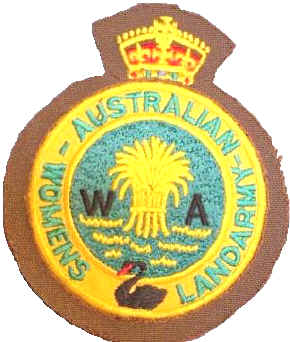 |
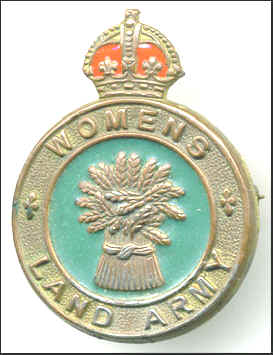
|
|
Australian Women's Land
Army WA |
The Australian Women's Land Army badge was based on it's British
counterpart shown here.
|
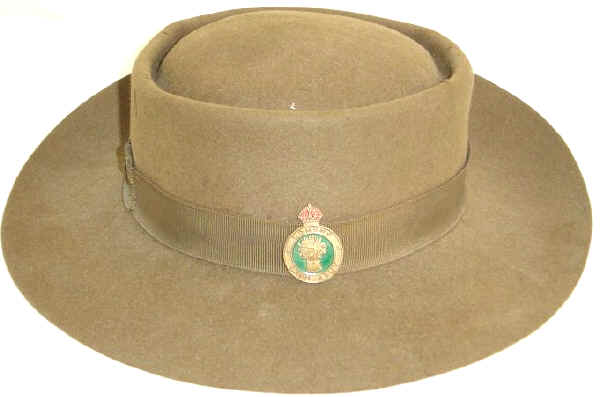 |
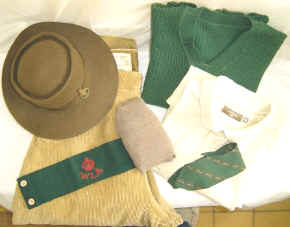 |
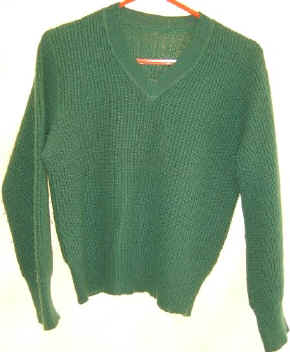 |
|
AWLA uniform issue |
AWLA pullover |
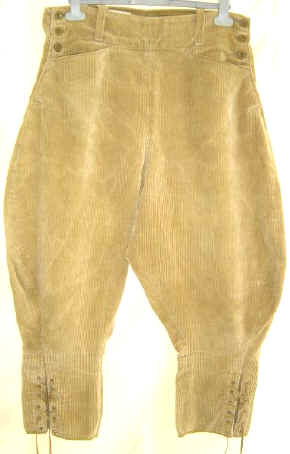
|
<<<
AWLA jodhpurs as issued
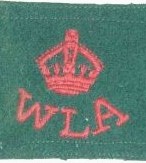
AWLA badge as displayed
on the arm-band shown below. |
 |
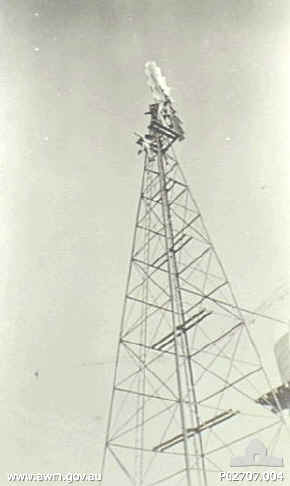 |
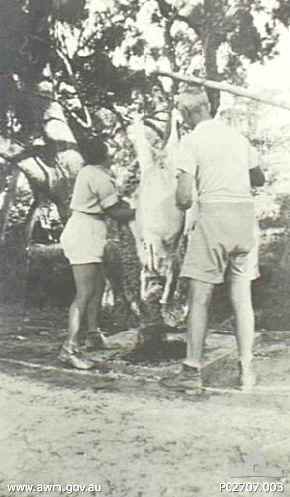 |
| Wagga,
NSW. February 1946. Peggy Hull, a member of the Australian Women's Land
Army, servicing a 60 foot windmill on a property called Alabamba, where
she and another member of the Land Army worked. (Donor P. George) |
Wagga,
NSW. 1946. Peggy Hull, a member of the Australian Women's Land Army, and
Mr Horton, the owner of Alabamba property on which two Land Army women
worked, punching the skin from a sheep carcass to prepare it for
butchering. (Donor P. George) |
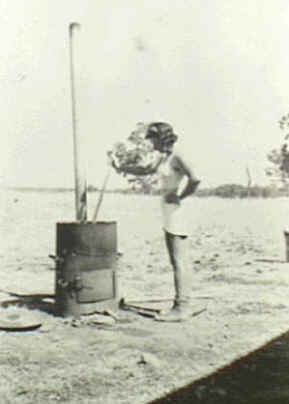 |
Tambar
Springs, NSW. December 1945.
A member of the Australian Women's
Land Army washing her clothes in a boiler on Merrigular Property owned
by Mr Cadell near Premer.
Six members of the Land Army, worked
on this property and lived in shearer's huts, two to a room. The women
undertook a variety of jobs around the farm, including lamb marking,
dipping, cleaning the fly blown eyes of sheep, helping in the shearing
shed, driving and maintaining a tractor and header, cutting and baling
seed lucerne, and harvesting wheat.
The women worked long and irregular
hours and had no set leave, earning 30/- ($3) per week . (Donor
P. George) |
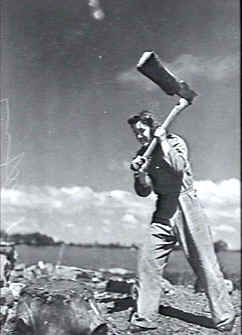 |
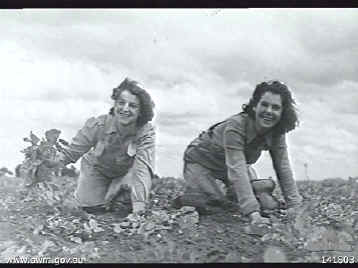 |
| Victoria.
1944-10-15. A member of the Australian Women's Land Army chopping blocks
of wood on a Gippsland farm. |
Victoria.
1944-10-15. Elaine Bosketti (left) and Heather Cameron, members of the
Australian Women's Land Army, weeding a large paddock of carrots on a
Gippsland farm. |
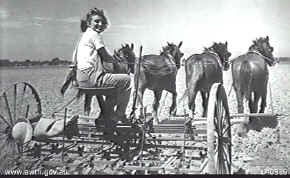 |
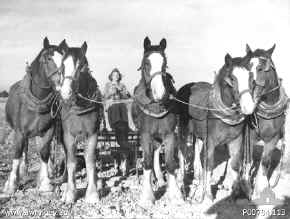 |
| WERRIBEE,
VIC. 1944-01-26. A member of the Australian Women's Land Army using a
four horse scuffler on the Victorian Government Experimental Farm. |
c.
1944. A member of the Australian Women's Land Army drives a five horse
team land cultivator. |
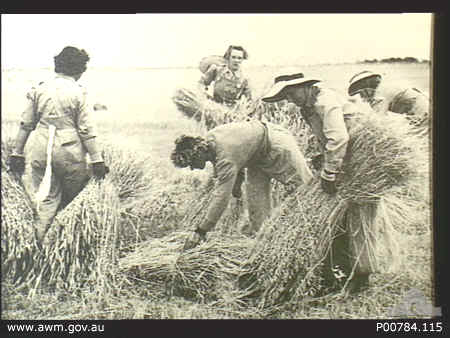 |
c. 1944. Five members of
the Australian Women's Land Army stack sheaves of oats after the reaper
and binder has been through. |
|
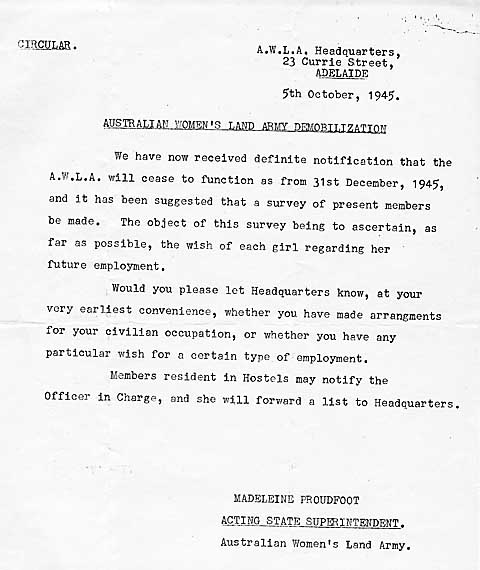
|
|
Demobilisation circular
for AWLA, 1945 |
|
Women who served in the
AWLA were awarded the Civilian Service medal after it was introduced in
1994 to recognize military style service by civilians. |
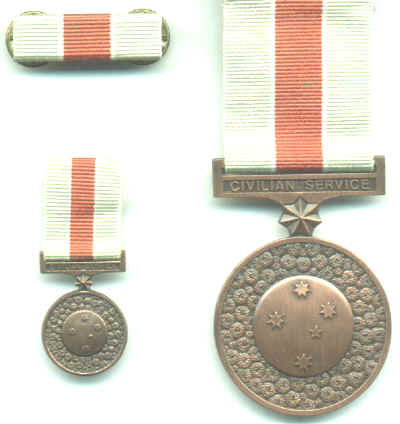 |
As awarded to Elsie
Watson STANBURY |
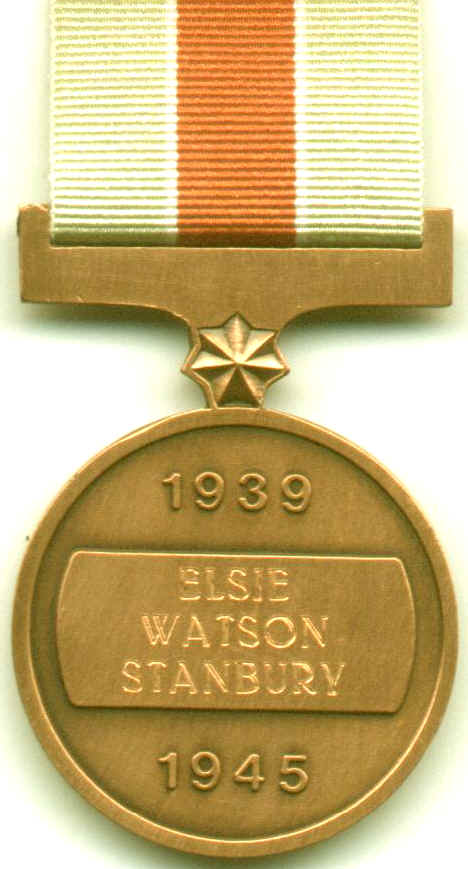 |
|